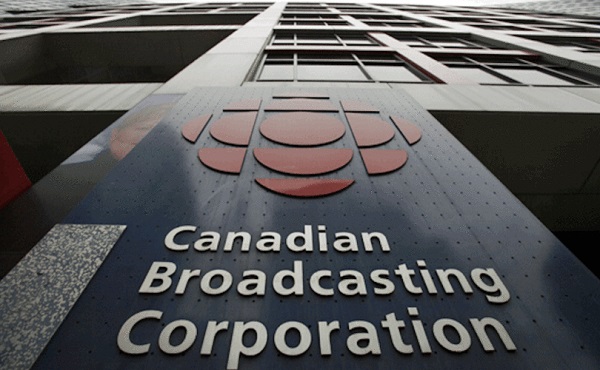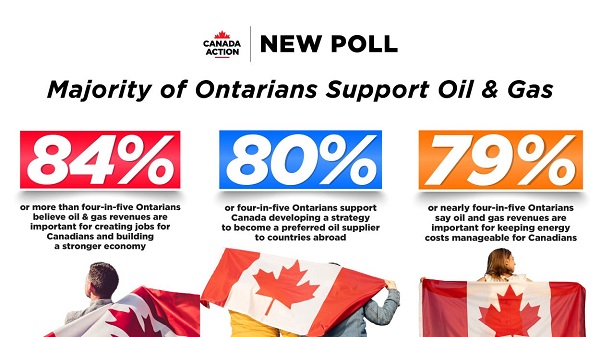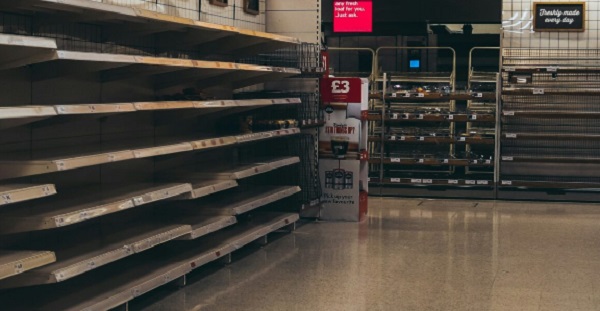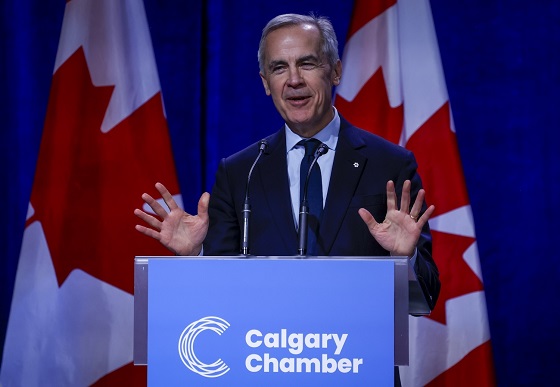Business
Conservatives grill CBC CEO for billing taxpayers $6,000 during France vacation

From LifeSiteNews
Conservative MPs have blasted the state-funded Canadian Broadcasting Corporation’s CEO after she billed taxpayers $6,000 during a vacation to France.
During an October 21 Standing Committee on Canadian Heritage meeting, Conservative MPs grilled the CBC’s Catherine Tait over her $5,869 France vacation which she claimed qualified as work since it was during the Paris Olympics.
“There were no hotel rooms in Paris that were available at a lower price than that,” Tait told the Commons heritage committee after records obtained by the National Post revealed that she stayed at the luxury Hotel du Collectionneur at $1,000 per night.
CBC CEO admits to billing taxpayers $6,000 for her time in Paris, while on a personal vacation in France.
She thinks she gets to decide when taxpayers are on the hook and when they're not. And we should just trust her.
This is abuse of taxpayer dollars.
Defund the CBC. pic.twitter.com/qr3cDRI1kC
— Jamil Jivani (@jamiljivani) October 21, 2024
“This was the official hotel for the Games. I was there with other delegates. I benefited from all the services, for example the shuttle that took us to the opening of the Games,” she continued.
Tait continued to explain that she was in France for vacation, but interrupted her vacation to cover the Olympics which took place as the same time.
“I was on a personal trip to France and I did not bill the taxpayer for my flight or travel from Canada,” she said.
“What did you bill the taxpayer for?” Conservative MP Jamil Jivani questioned.
“The hotel and the train to get to Paris,” replied Tait.
“Where did your personal trip end and your taxpayer billing begin?” he pressed.
“As part of my job, being at the opening of the Olympics was absolutely expected of me so I interrupted my holiday and took the four days to go to the Olympics,” Tait insisted.
According to her schedule, Tait attended a reception at the Louvre Museum, two meetings with non-CBC staff, three meetings with CBC staff, and attended the opening ceremony. Tait also attended the fencing, swimming and beach volleyball competitions, although it is unclear if these were in a work or recreational capacity.
Tait later claimed that questions surrounding her spending “is a clear effort on the part of members of this committee to vilify and to discredit me and to discredit the organization.”
MP Damien Kurek pointed out that Tait is one of the highest paid public employees in Canada.
“You make more than the Prime Minister,” said Kurek, noting that the prime minister currently earns $406,200 without any yearly bonus.
“You just spent $1,000 a night for a hotel room in Paris during the Olympics,” he continued. “We are in a situation where you are coming to the conclusion of your term being paid more than the Prime Minister of this country.”
Tait’s spending of taxpayer dollars comes as the outlet’s TV advertising revenue dropped nearly 10 percent last year, which the CBC admitted they do not expect to regain in the foreseeable future.
While the CBC’s overall revenue dropped 4.3 percent in 2024, funding from Prime Minister Justin Trudeau’s government increased 13 percent from $1.2 billion to $1.4 billion.
Additionally, in August, documents revealed that Tait doled out $18 million in bonuses after eliminating hundreds of jobs to cut costs.
Regardless of their low viewership, the CBC continues to receive massive subsidies from the Liberal government. Many independent media outlets and Conservative Party politicians, including leader Pierre Poilievre, have accused the outlet of bias and partisanship because of this dependency on government.
Despite these concerns, the Trudeau government has only poured money into the outlet. Beginning in 2019, Parliament changed the Income Tax Act to give yearly rebates of 25 percent for each news employee in cabinet-approved media outlets earning up to $55,000 a year, to a maximum of $13,750.
The Canadian Heritage Department since admitted that the payouts are not sufficient to keep legacy media outlets running, and even recommended that the rebates be doubled to a maximum of $29,750 annually.
Last November, Trudeau again announced increased payouts for legacy media outlets, payouts which coincidence with the lead-up to the 2025 election. The subsidies are expected to cost taxpayers $129 million over the next five years.
Similarly, Trudeau’s 2024 budget outlined $42 million in increased funding for the CBC for 2024-25.
Business
Largest fraud in US history? Independent Journalist visits numerous daycare centres with no children, revealing massive scam

A young journalist has uncovered perhaps the largest fraud scheme in US history.
He certainly isn’t a polished reporter with many years of experience, but 23 year old independent journalist Nick Shirley seems to be getting the job done. Shirley has released an incredible video which appears to outline fraud after fraud after fraud in what appears to be a massive taxpayer funded scheme involving up to $9 Billion Dollars.
In one day of traveling around Minneapolis-St. Paul, Shirley appears to uncover over $100 million in fraudulent operations.
🚨 Here is the full 42 minutes of my crew and I exposing Minnesota fraud, this might be my most important work yet. We uncovered over $110,000,000 in ONE day. Like it and share it around like wildfire! Its time to hold these corrupt politicians and fraudsters accountable
We ALL… pic.twitter.com/E3Penx2o7a
— Nick shirley (@nickshirleyy) December 26, 2025
Business
“Magnitude cannot be overstated”: Minnesota aid scam may reach $9 billion

Federal prosecutors say Minnesota’s exploding social-services fraud scandal may now rival nearly the entire economy of Somalia, with as much as $9 billion allegedly stolen from taxpayer-funded programs in what authorities describe as industrial-scale abuse that unfolded largely under the watch of Democrat Gov. Tim Walz. The staggering new estimate is almost nine times higher than the roughly $1 billion figure previously suspected and amounts to about half of the $18 billion in federal funds routed through Minnesota-run social-services programs since 2018, according to prosecutors. “The magnitude cannot be overstated,” First Assistant U.S. Attorney Joe Thompson said Thursday, stressing that investigators are still uncovering massive schemes. “This is not a handful of bad actors. It’s staggering, industrial-scale fraud. Every day we look under a rock and find another $50 million fraud operation.”
Authorities say the alleged theft went far beyond routine overbilling. Dozens of defendants — the vast majority tied to Minnesota’s Somali community — are accused of creating sham businesses and nonprofits that claimed to provide housing assistance, food aid, or health-care services that never existed, then billing state programs backed by federal dollars. Thompson said the opportunity became so lucrative it attracted what he called “fraud tourism,” with out-of-state operators traveling to Minnesota to cash in. Charges announced Thursday against six more people bring the total number of defendants to 92.
BREAKING: First Assistant U.S. Attorney Joe Thompson revealed that 14 state Medicaid programs have cost Minnesota $18 billion since 2018, including more than $3.5 billion in 2024 alone.
Thompson stated, "Now, I'm sure everyone is wondering how much of this $18 billion was… pic.twitter.com/hCNDBuCTYH
— FOX 9 (@FOX9) December 18, 2025
Among the newly charged are Anthony Waddell Jefferson, 37, and Lester Brown, 53, who prosecutors say traveled from Philadelphia to Minnesota after spotting what they believed was easy money in the state’s housing assistance system. The pair allegedly embedded themselves in shelters and affordable-housing networks to pose as legitimate providers, then recruited relatives and associates to fabricate client notes. Prosecutors say they submitted about $3.5 million in false claims to the state’s Housing Stability Services Program for roughly 230 supposed clients.
Other cases show how deeply the alleged fraud penetrated Minnesota’s health-care programs. Abdinajib Hassan Yussuf, 27, is accused of setting up a bogus autism therapy nonprofit that paid parents to enroll children regardless of diagnosis, then billed the state for services never delivered, netting roughly $6 million. Another defendant, Asha Farhan Hassan, 28, allegedly participated in a separate autism scheme that generated $14 million in fraudulent reimbursements, while also pocketing nearly $500,000 through the notorious Feeding Our Future food-aid scandal. “Roughly two dozen Feeding Our Future defendants were getting money from autism clinics,” Thompson said. “That’s how we learned about the autism fraud.”
The broader scandal began to unravel in 2022 when Feeding Our Future collapsed under federal investigation, but prosecutors say only in recent months has the true scope of the alleged theft come into focus. Investigators allege large sums were wired overseas or spent on luxury vehicles and other high-end purchases. The revelations have fueled political fallout in Minnesota and prompted renewed federal scrutiny of immigration-linked fraud as well as criticism of state oversight failures. Walz, who is seeking re-election in 2026 after serving as Kamala Harris’ running mate in 2024, defended his administration Thursday, saying, “We will not tolerate fraud, and we will continue to work with federal partners to ensure fraud is stopped and fraudsters are caught.” Prosecutors, however, made clear the investigation is far from finished — and warned the final tally could climb even higher.
-

 Censorship Industrial Complex22 hours ago
Censorship Industrial Complex22 hours agoUS Under Secretary of State Slams UK and EU Over Online Speech Regulation, Announces Release of Files on Past Censorship Efforts
-

 Business1 day ago
Business1 day ago“Magnitude cannot be overstated”: Minnesota aid scam may reach $9 billion
-

 Energy2 days ago
Energy2 days agoNew Poll Shows Ontarians See Oil & Gas as Key to Jobs, Economy, and Trade
-

 Business2 days ago
Business2 days agoSocialism vs. Capitalism
-

 Haultain Research4 mins ago
Haultain Research4 mins agoSweden Fixed What Canada Won’t Even Name
-

 Energy2 days ago
Energy2 days agoCanada’s debate on energy levelled up in 2025
-

 Daily Caller2 days ago
Daily Caller2 days agoIs Ukraine Peace Deal Doomed Before Zelenskyy And Trump Even Meet At Mar-A-Lago?
-

 Business24 hours ago
Business24 hours agoLargest fraud in US history? Independent Journalist visits numerous daycare centres with no children, revealing massive scam








